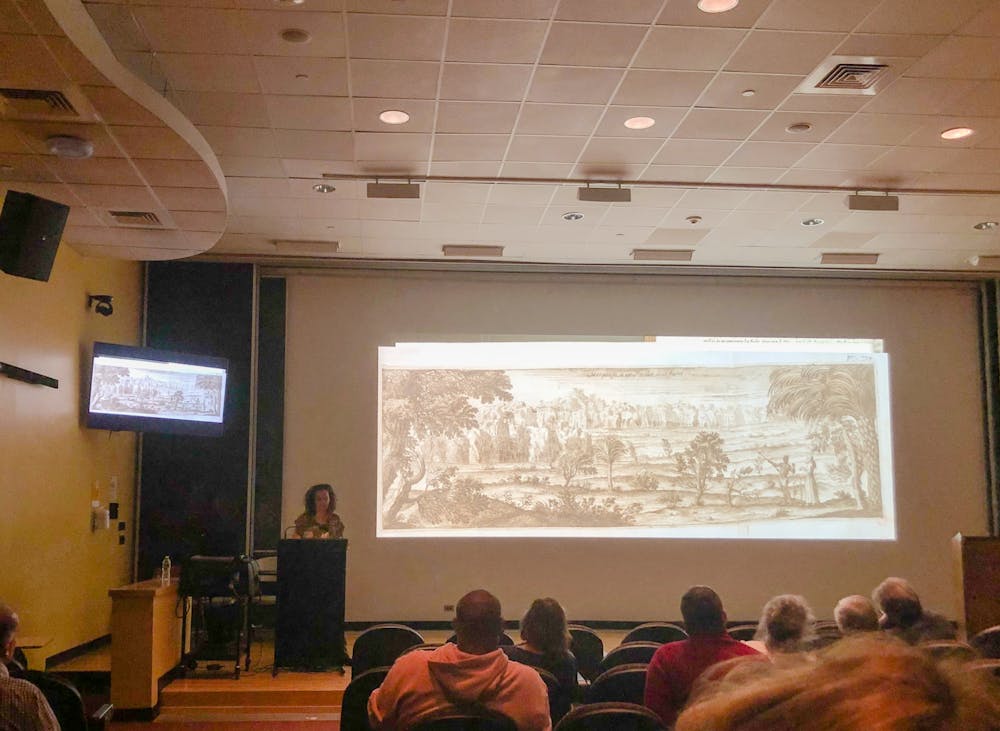Cécile Fromont — a history of art professor at Yale — discussed her new book “Images on a Mission in Early Kongo and Angola” in front of an audience of Brown community members at the List Art Center Thursday. In the discussion, she outlined her analysis of illustrations created by Italian missionaries and friars in the 17th and 18th centuries.
In her book, Fromont deviates from historical traditions of analysis to examine artwork created by Italian Capuchin friars between 1650 and 1750 depicting the Italian missionary project in Kongo and Angola. Fromont told The Herald that her work differs from general methods of historical analysis by considering the site of the mission as “a space of reflection giving equal weight to the two sides,” referring to Central Africans and Italian missionaries.
While similar works are often regarded by historians as depicting a one-sided European conquest, Fromont proposed that the pieces could also be considered cross-cultural works because Capuchin and Central African interactions expressed “a discourse about nature, culture and faith.”
In Fromont’s view, “the Capuchin images are not European-conceived and executed pictures of Kongo and Angola and their inhabitants, but (rather) pictures from Central Africa (that were) molded by the dialogues that unfolded between the (Capuchin) friars and Central Africans,” she said.
Fromont noted that her analysis is not simply “reading against the grain” or discovering the agency of Central African subjects in the Capuchin works, but one that seriously considers “the origins of (Central African) representations in cross-cultural collaboration.”
Reflecting on her work, Fromont discussed the gap between the large archives of European documents and the far more limited archives created by non-European Indigenous historical actors. This discrepancy “is born from the history and the structures of our time,” she said. “It is heightened by historiography that has given an oversized emphasis to certain types of documents over others as authoritative sources.”
Closing the gap between the availability of European and Indigenous archives by “looking at new existing repositories, expanding methodologies, theoretical innovations and attention to the many forms of Indigenous knowledge” is “an arduous task,” she said.
Fromont noted that work like hers, which engages with — and sometimes challenges — the archives of academic institutions often depends on “access, funding and validation” from those same institutions. She added that her analytic approach “offers another tool” to cross-cultural scholars.
Approximately 50 people attended Thursday’s discussion. Attendee Kolya Shields ’24 said that Fromont’s work was “a really interesting visual analysis that worked to unsettle normative textual analyses.” Shields said the lecture left them curious about the political implications of Fromont’s work.
Andrew Laird, director of the Center for the Study of the Early Modern World, said that Fromont’s work was “a fascinating perspective” that is in line with the center’s work.

Neil Mehta is the editor-in-chief and president of the Brown Daily Herald's 134th editorial board. They study public health and statistics at Brown. Outside the office, you can find Neil baking and playing Tetris.





